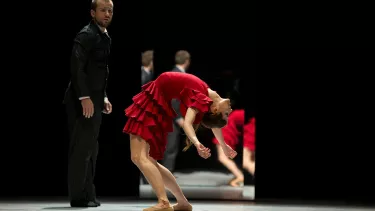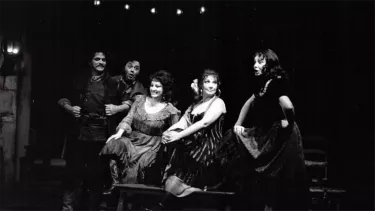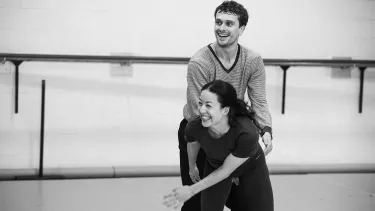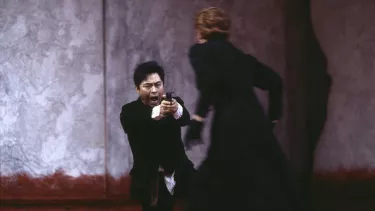Five Reasons to See Carmen
For the very first time this month, The Australian Ballet is thrilled to be performing an innovative contemporary retelling of Carmen at Sydney Opera House. Get up to speed on the spicy Spanish tale, from its much-loved operatic roots to Johan Inger’s modern dance spin.

1. The story is almost 200 years’ old
Based on his own experiences travelling through Spain, Prosper Mérimée wrote the tale of lust, deception and betrayal in 1845. Since then, Carmen has been adapted for opera, theatre, dance, musicals and film. From Charlie Chaplin’s comedic retelling A Burlesque on Carmen in 1915, to the most recent 2022 film Carmen starring Paul Mescal as a PTSD suffering marine.

2. This is not your grandmother’s Carmen
Roland Petit adapted Carmen for the ballet stage in 1949. Petit’s corseted-and-tutu-less Carmen with a pixie cut disrupted the traditional ballet aesthetic, so it’s no wonder that when Johan Inger took on the tale, he pushed the boundaries of ballet even further. Inger’s production of Carmen is grounded in contemporary style, meaning ballet flats, additional original music and no pointe shoes required!

3. The score features some of the most famous opera music
You may not realise it but you already know parts of the score. Georges Bizet created the opera, Carmen in 1875. Carmen became his most famous work and featured some of the most famous arias in the classical cannon, including Habanera. Bizet was never able to revel in the success of Carmen, he died unexpectedly only three months after the opera premiered. Bizet’s compositions have been featured throughout the world and in 2009, The Muppets took on Habanera in an iconic performance featuring Beaker on vocals and of an unexpected cameo from Animal. Johan Inger’s Carmen uses the more recent 1949 composition by Rodion Shchedrin, Carmen Suite, with additional original music by Malc Álvarez.
4. Johan Inger is one of the most exciting choreographers of a generation
The Australian Ballet last worked with Johan Inger on I New Then in 2022. Inger’s unique vision and choreographic style is an indication of the changing nature of dance. Inger’s use of modern concepts combined with classical music and expert technique offers an exciting new frontier of how we experience ballet and dance.

5. There’s a surprise addition
To really switch it up, Johan Inger has added a new character to the famous story, that of a child. The audience is given a fresh perspective of the action, one of an innocent bystander. No longer influenced by the narrator’s point of view, the child becomes an objective onlooker, and the audience is given a more complete, if darker picture of the narrative. Inger takes the ‘he said, she said’ aspect out of the story, leaving its truth for the audience to decide.

The Australian Ballet present Johan Inger’s Carmen in the Joan Sutherland Theatre from 10 - 27 April, opening their 2024 season at Sydney Opera House.
Explore the long history of Opera Australia’s Carmen productions.
Image credits, all images courtesy of The Australian Ballet and Opera Australia:
1. Carmen, Compania Nacional de Danza, Spain. Photo: Jésus Vallinas.
2. The 1976 production of Carmen at Sydney Opera House, directed by Tom Lingwood. Photo: Opera Australia archives.
3. Sheree da Costa and David Burch, Carmen (Petit) 1981. Photo: Branco Gaica.
4. The Australian Ballet dancers Callum Linnane and Jill Ogai in rehearsals for Carmen.
5. Ding Yi as Don Jose in Opera Australia's 2003 production of Carmen at Arts Centre Melbourne, directed by Lindy Hume. Photo: Jeff Busby.
Stage Direction: Anna Karenina
In this edition of Stage Direction, Stephen A Russell traces the tracks of Anna Karenina, Tolstoy’s tempestuous ode to love, loss and family, ahead of its latest ballet adaptation at the Sydney Opera House.

Love List: Steve Reich by Nicolette Fraillon AM
We asked The Australian Ballet’s Music Director and Chief Conductor Nicolette Fraillon AM to pick her favourite Steve Reich works.

